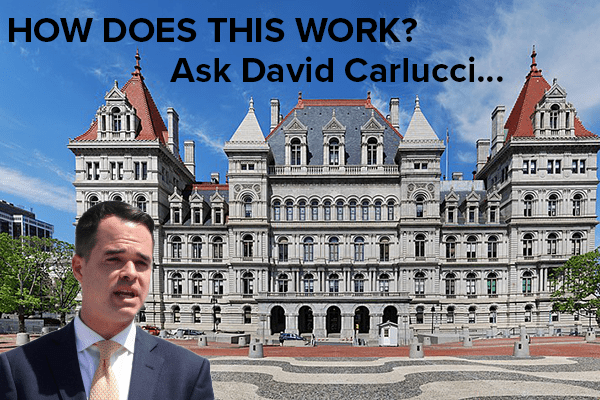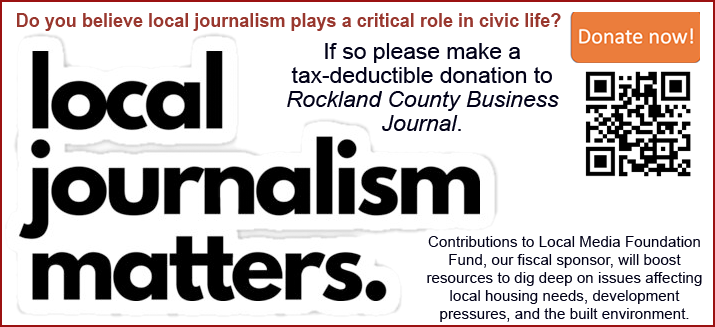|
RCBJ-Audible (Listen For Free)
|
The YIGBY (“Yes, In God’s Backyard”) Faith-Based Affordable Housing Movement Reintroduced In New York State Legislature
By David Carlucci
 Everywhere in the state, from New York City to Buffalo, one issue remains at the top of voters’ minds: affordable housing. In this legislative session, state lawmakers are taking creative, faith-based approaches to solving this issue.
Everywhere in the state, from New York City to Buffalo, one issue remains at the top of voters’ minds: affordable housing. In this legislative session, state lawmakers are taking creative, faith-based approaches to solving this issue.
In the past decade, New York State has built only 400,000 new homes despite creating over 1.2 million new jobs during the same time frame. Meanwhile, rent and home prices continue to soar. Rents have grown 30 percent in parts of the state, and between 40 and 60 percent inside and outside the NYC metropolitan area, respectively, since 2015. Home prices have risen from 50 to 80 percent during that same time.
One thing is clear: New York is not meeting the demand for affordable housing. What is not clear is how to bolster the state’s housing supply. New York is combating this crisis from all angles, from reworking zoning laws to financially incentivizing construction companies to implementing protective measures against price gouging and eviction.
The Faith-Based Affordable Housing Act is one of the state’s latest strategies.
Senator Goundares and Assemblyman Cunningham’s SB 3397 and AB 3647 promote the growth of affordable housing stock by creating housing opportunities on land owned by religious organizations. While a religious organization must completely own the land, the legislation allows for faith-based groups to partner with a third-party developer to construct the project.
If passed, the Faith-Based Affordable Housing Act will require municipalities to allow the construction of residential buildings on all parcels of land owned solely, directly, or indirectly by a religious corporation. Buildings must be mixed-income or 100 percent affordable housing, according to local guidelines. These housing projects will be “as-of-right,” meaning they do not require a municipal discretionary review process, allowing for a streamlined process. Municipal building departments must issue permits within 60 days of the application receipt.
Local municipal governments, including Rockland County and the Village of Nyack have voiced opposition to the Act.
Although there appears to be limited government oversight on this housing plan, the Faith-Based Affordable Housing Act implements several building compliance policies. While developments are exempt from environmental impact statements if specific certifications are complete, these housing developments must abide by the state’s wetland and drinking water laws. Similarly, compliance with state and local building, fire, and energy codes is required.
Housing developments cannot exceed specific density and height limits depending on the location of the building. In communities with fewer than 50 thousand residents, residential buildings cannot exceed 35 feet or the height of the tallest existing building. These buildings may only allow up to 30 residential units per acre. For communities between 50 thousand and 1 million residents, buildings can reach up to 55 feet, or the height of the tallest building, and have a density of 50 units per acre. Last, New York City, the only community with over a million residents, can develop buildings up to 55 feet tall or match the tallest existing building with a floor area ratio of 2.2 or greater if nearby districts allow it.
While supporters of the bill argue that its passage would add an additional 60,000 homes to the New York State housing supply, other stakeholders fear that the Faith-Based Affordable Housing Act will negatively impact historical landmarks in the Empire State. Similarly, opponents worry that an expedited housing stock would stress the financial resources of local communities. However, the bill’s sponsors responded that the legislation would introduce previously untaxable property into the tax roll.
In California, the “Affordable Housing on Faith and Higher Education Lands Act,” signed into law in 2023, streamlines the process for religious institutions and nonprofit colleges to develop affordable housing on their property, overriding local zoning restrictions and simplifying permitting procedures. California requires new housing built under the law to be 100 percent affordable.
In Washington state’s version, passed in 2019, municipalities must allow an increased density bonus for any affordable housing development located on property owned or controlled by religious organizations, provided that the housing units are set aside for low-income residents.
Cities have also taken steps to increase their housing stock through faith-based initiatives. A program in Atlanta seeks to spur the creation of at least 2,000 units of affordable housing over the next eight years as part of the administration’s 20,000 unit goal. And in San Antonio, a pilot program was launched in 2020 to establish partnerships with mission oriented and faith-based organizations to meet the city’s affordable housing needs.
It is too early to gauge the success of these programs in addressing housing shortages in those states, but proponents are optimistic about what they call YIGBY (Yes, In God’s Backyard), an offshoot of the YIMBY (Yes, In My Backyard) movement.
Opposition in New York is based on a number of factors, including the loss of local control over zoning/land use decisions, potential for community resistance, and inadequate in-place infrastructure.
Assemblyman Cunningham and Senator Goundares introduced the Faith-Based Affordable Housing Act during the 2023-2024 Legislative Session. Neither bill advanced past the Local Governments Committee. As of writing, there has been no movement in either chamber for the 2025 Legislative Session.
David Carlucci consults organizations on navigating government and securing funding. He served for ten years in the New York Senate.













